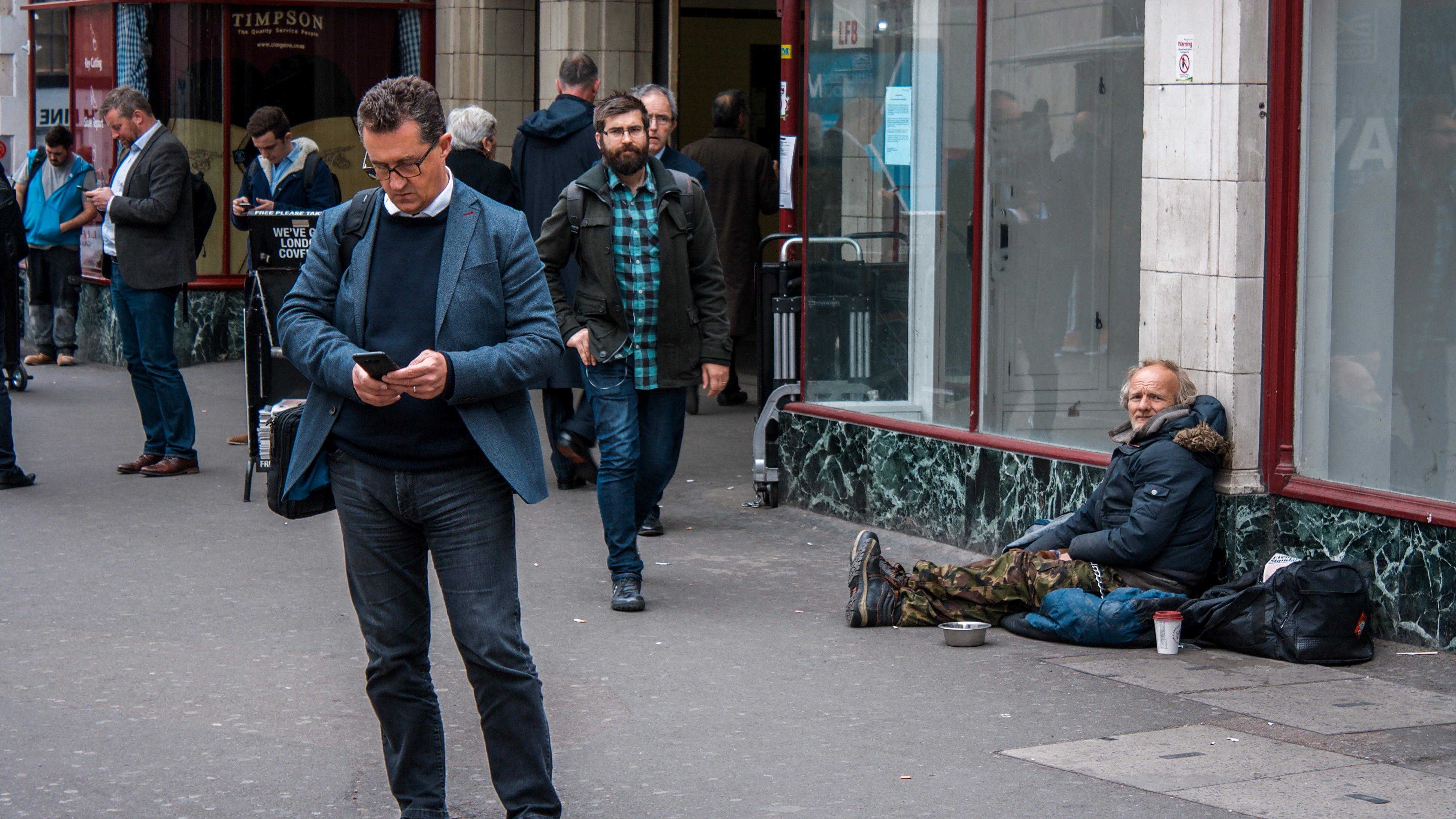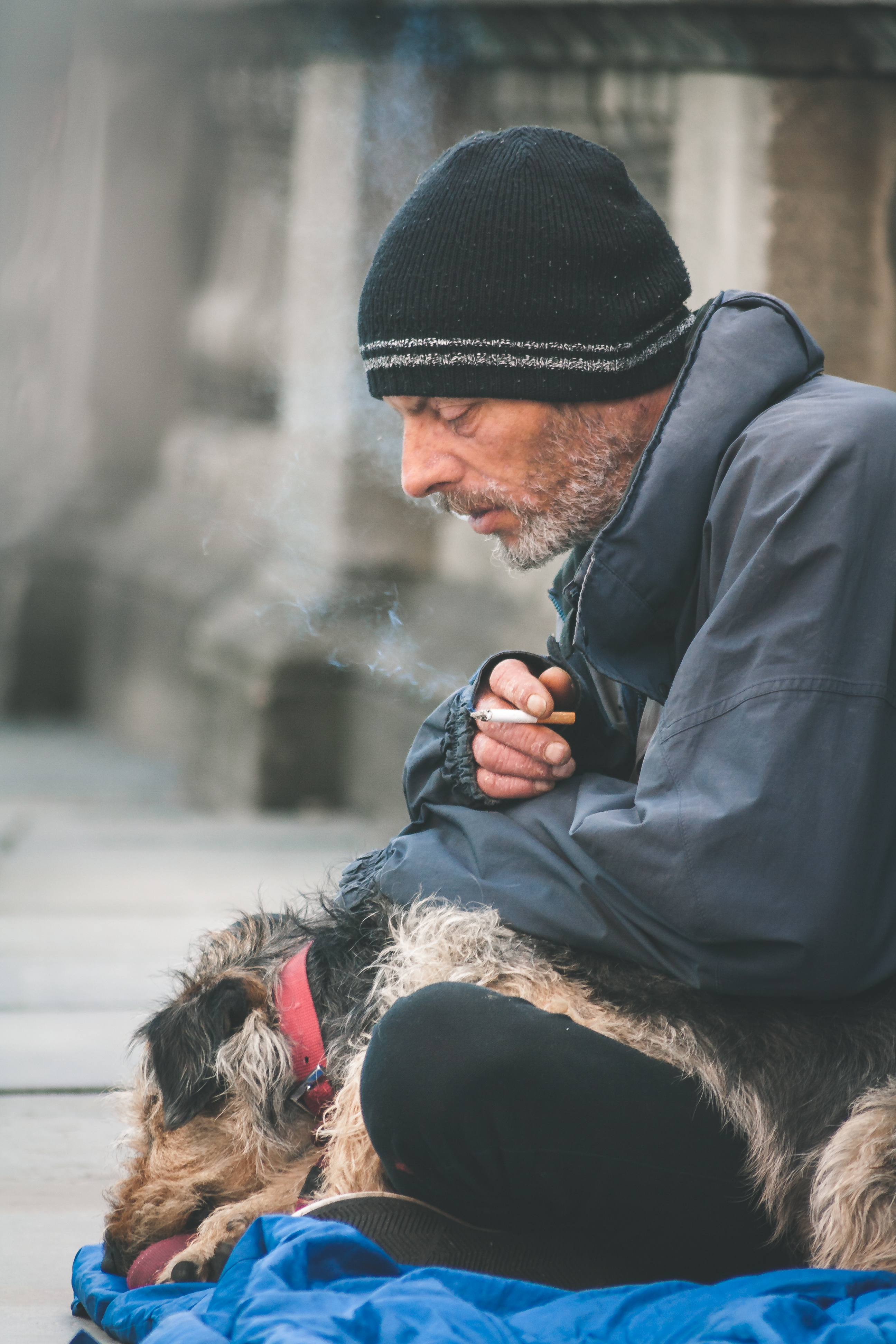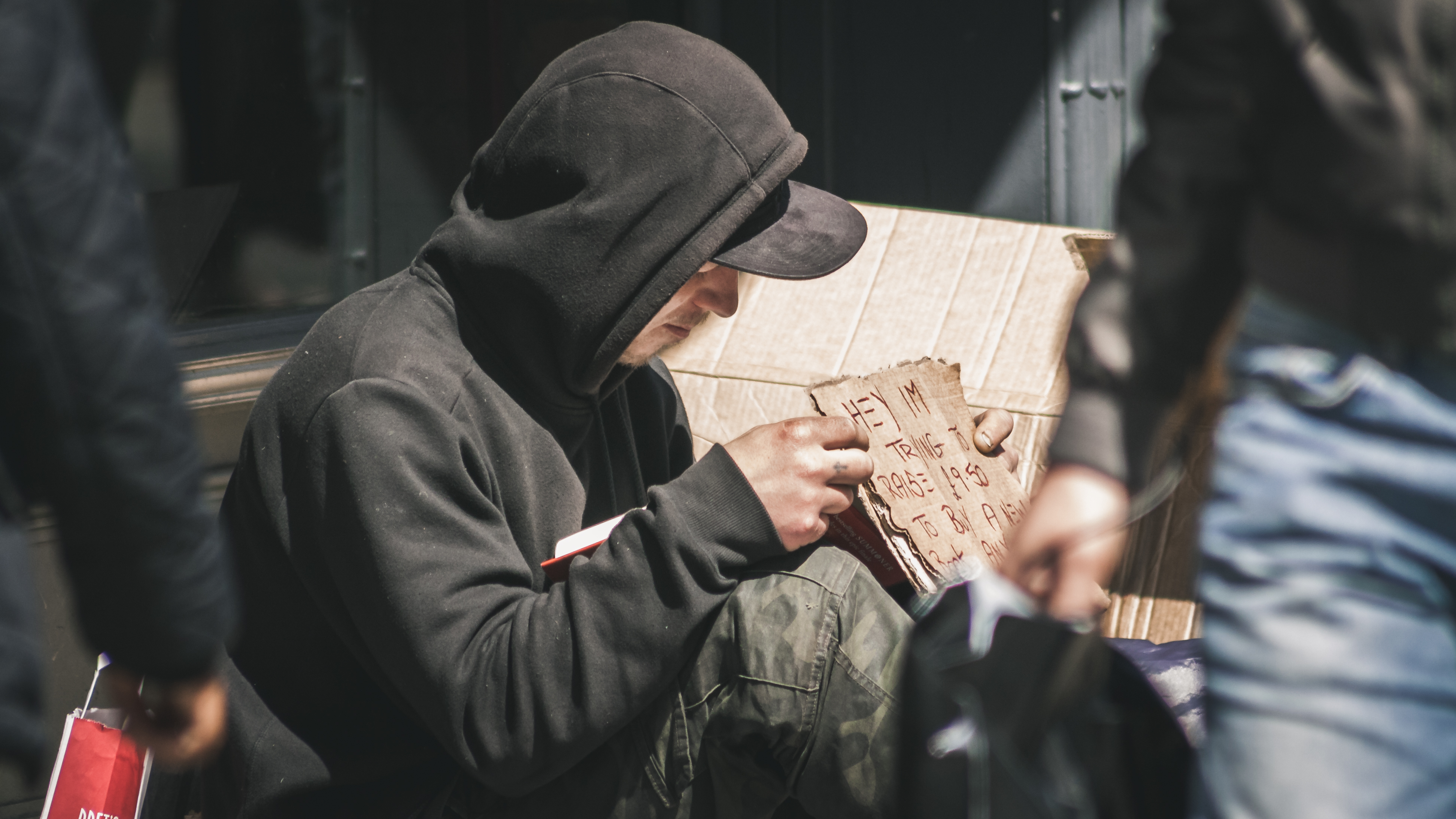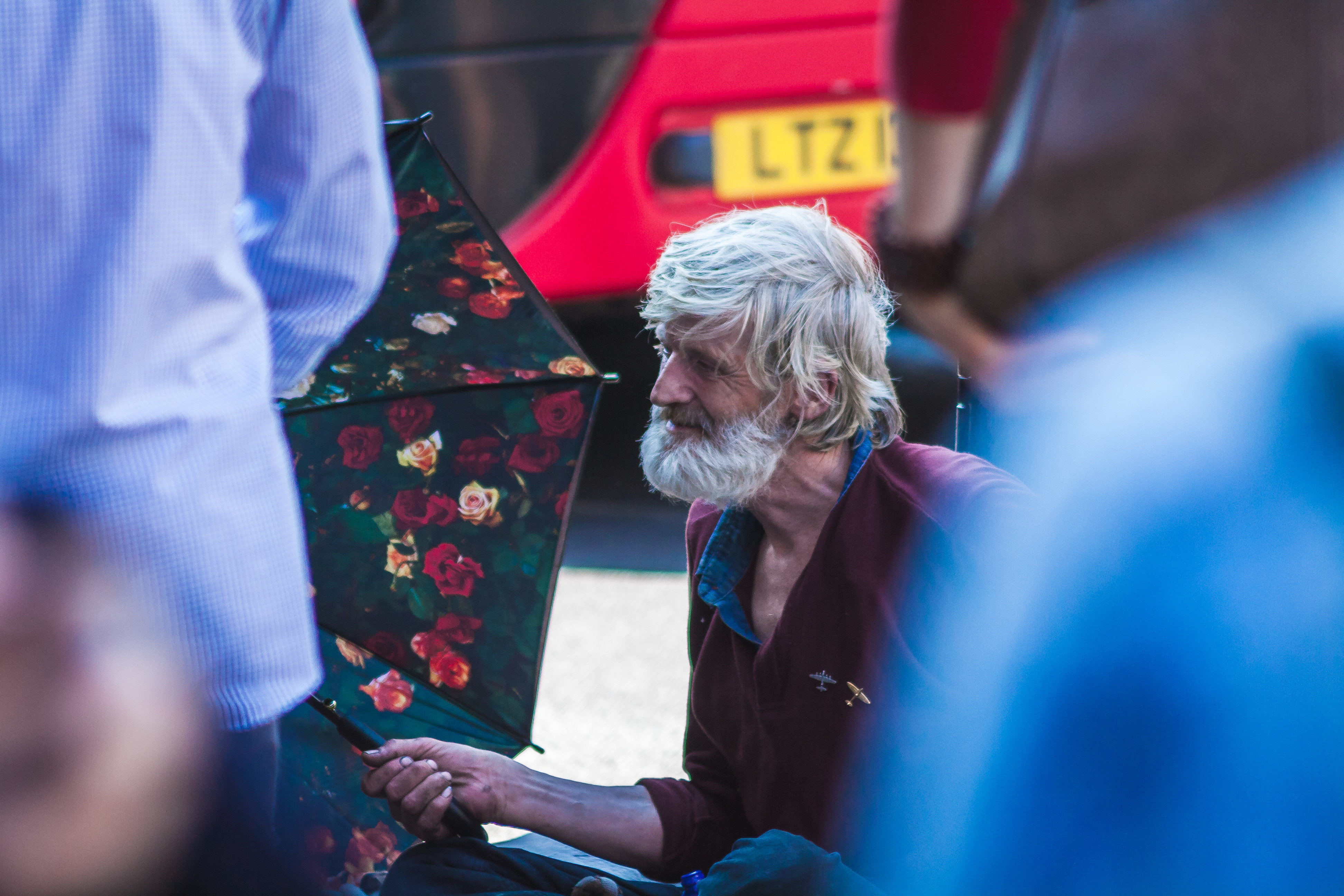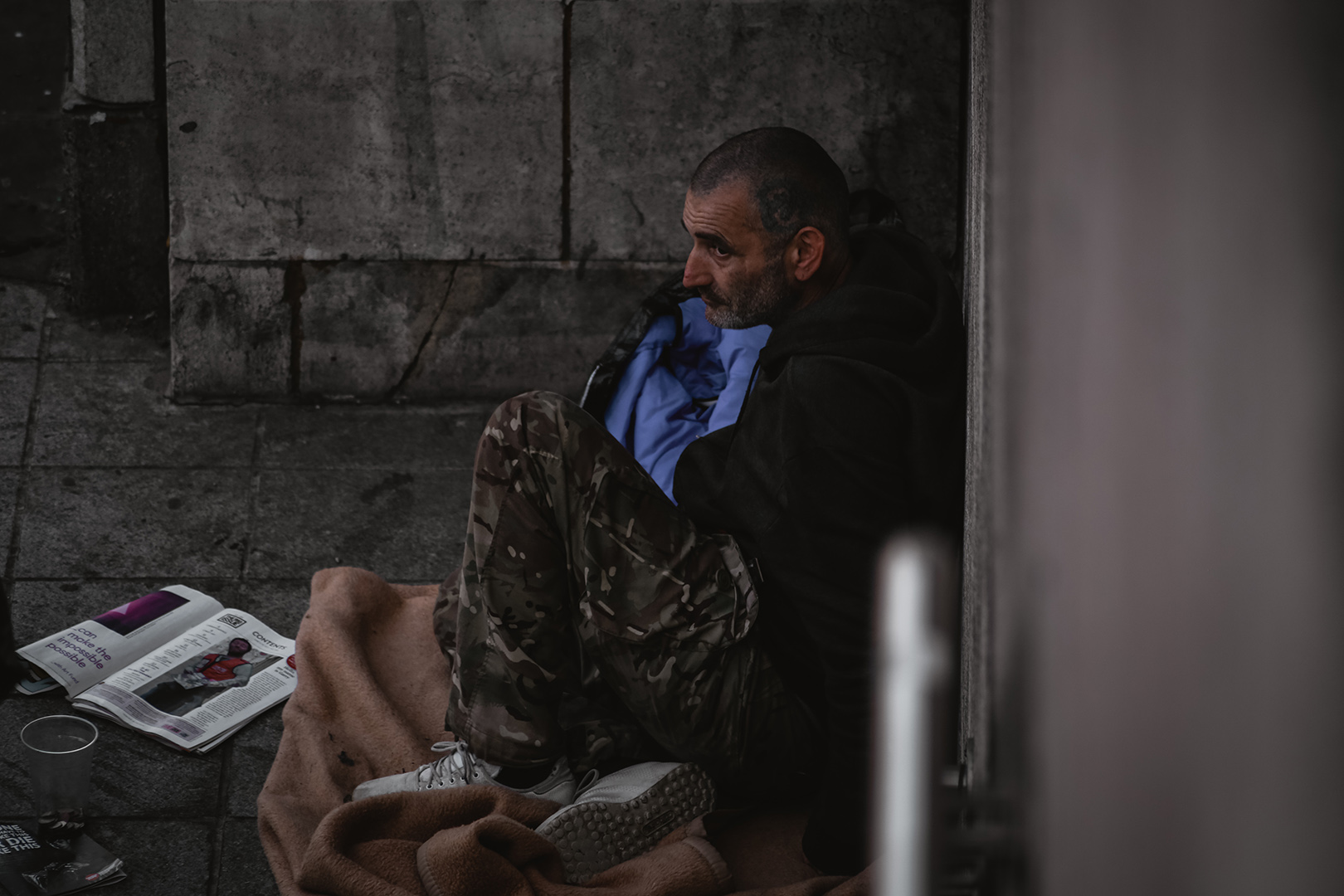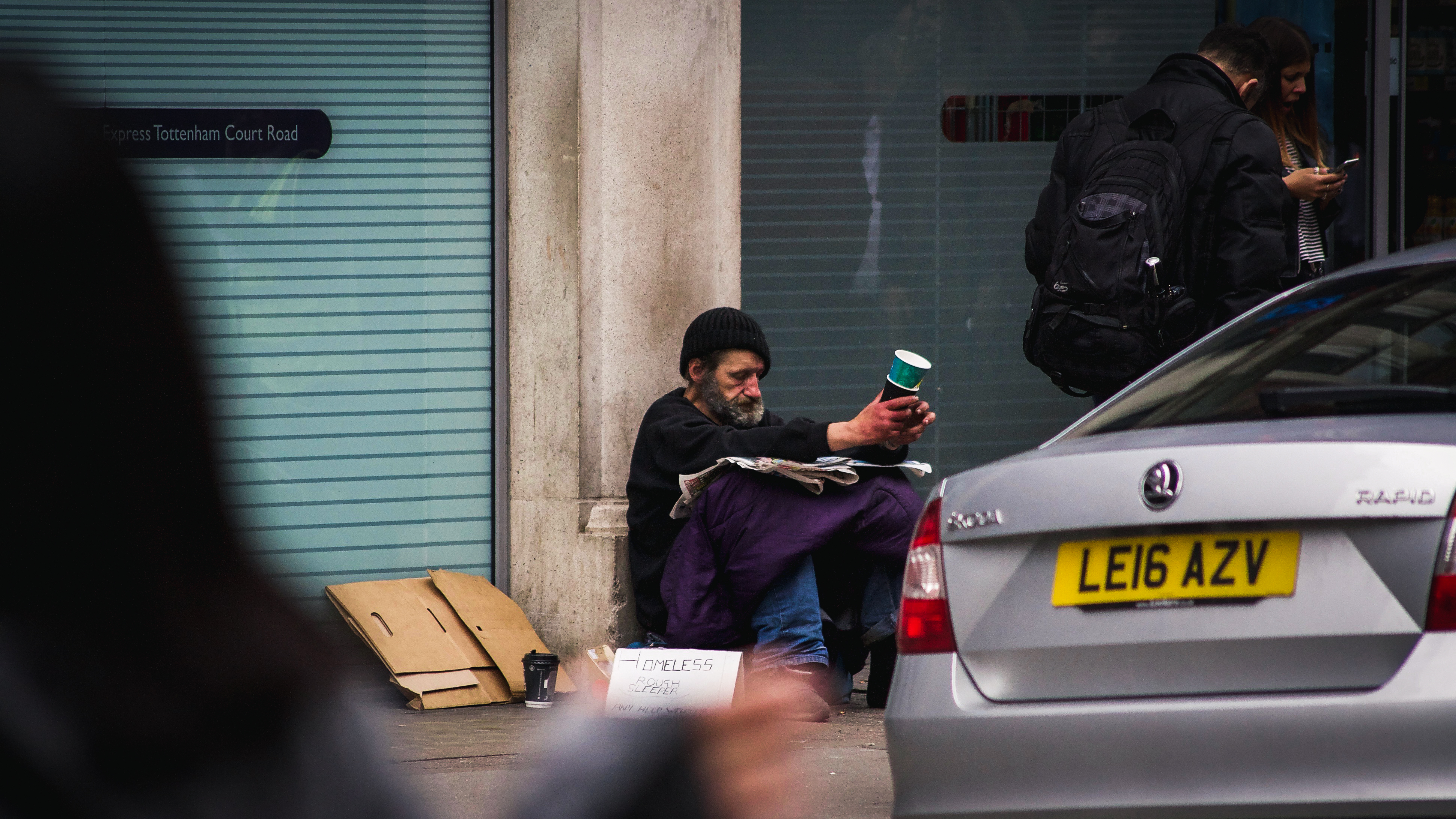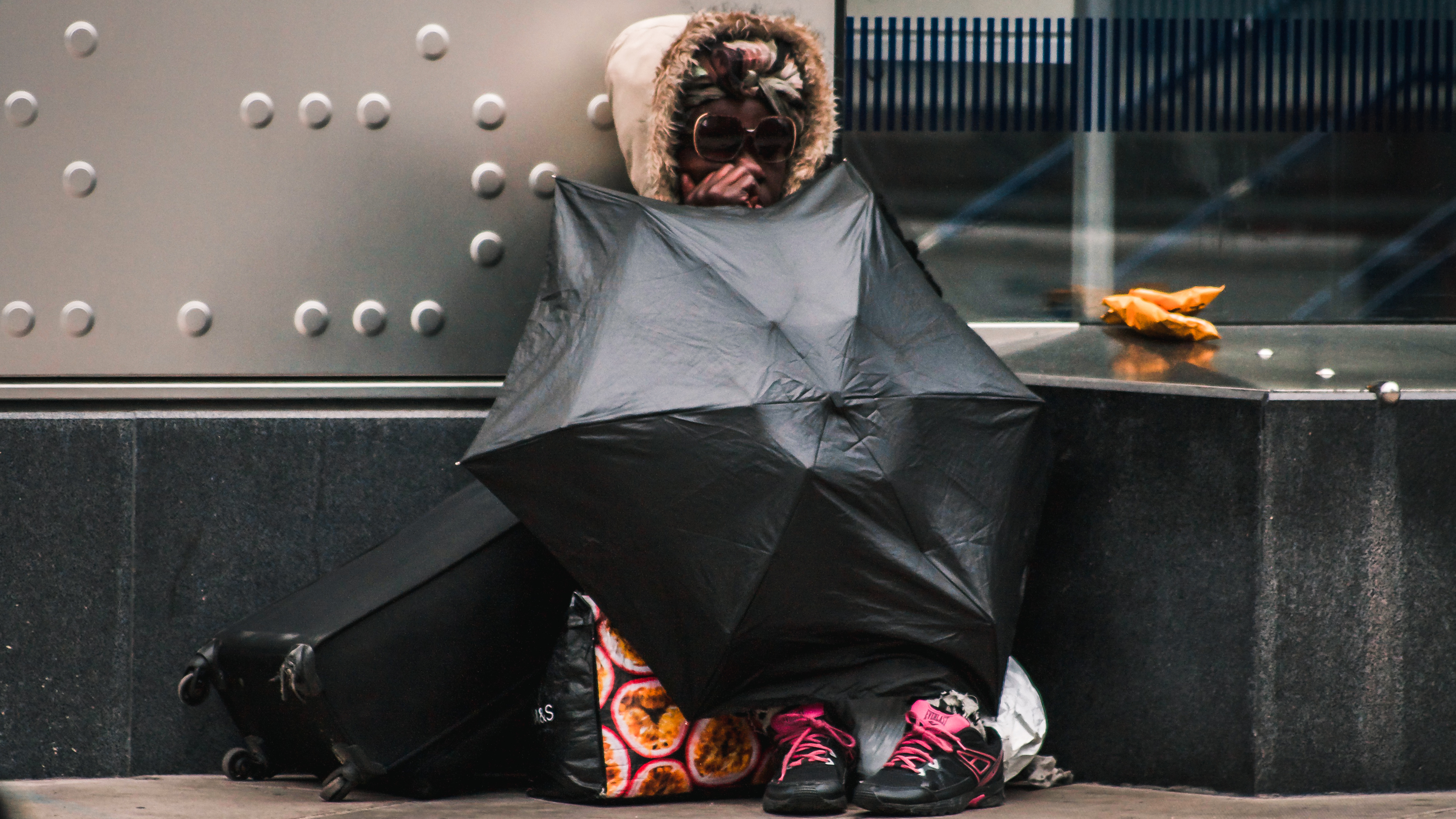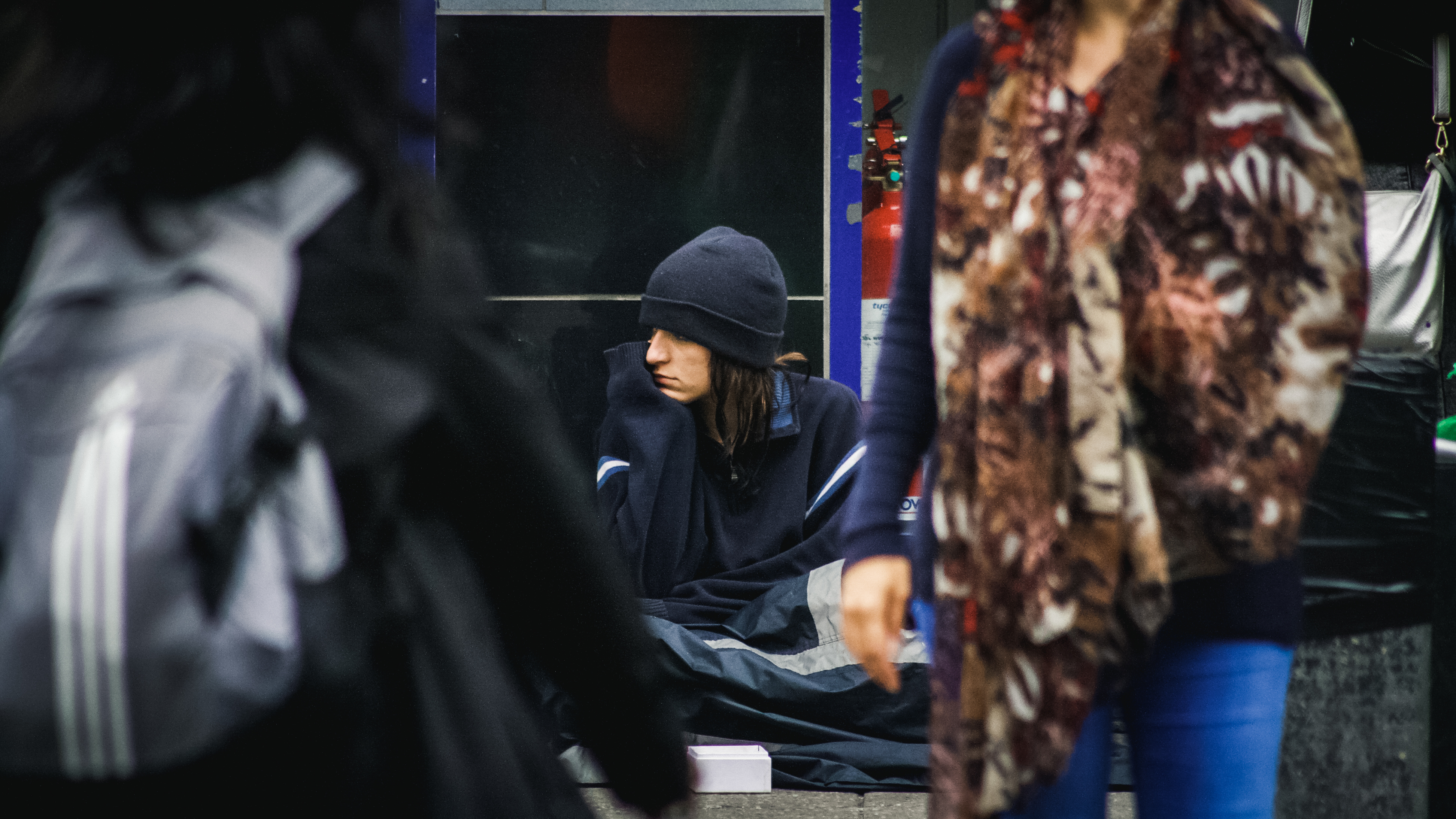Difference between revisions of "Support Systems and Homelessness"
From Londonhua WIKI
Gczahorsky (talk | contribs) |
Gczahorsky (talk | contribs) |
||
| Line 41: | Line 41: | ||
==Homelessness and Photography== | ==Homelessness and Photography== | ||
<br> | <br> | ||
| − | Although there is a lack of modern media coverage and literature on homelessness, there are some who want to change that. In the 1980s, there was a brief incline in homelessness on the media. There was a quick plateau and then subsequent decline in this coverage, but this short incline offers insight to the changing image of homelessness in the | + | ==Homelessness and Photography== |
| + | <br> | ||
| + | Although there is a lack of modern media coverage and literature on homelessness, there are some who want to change that. In the 1980s, there was a brief incline in homelessness on the media. <ref>Levinson, D., & Ross, M. (2007). ''Homelessness handbook''. Great Barrington, MA: Berkshire Pub. Group.</ref> There was a quick plateau and then subsequent decline in this coverage, but this short incline offers insight to the changing image of what homelessness is and how people are affected by it. From this media and change in view comes new developments stating that homelessness may rather be a process rather than a "situation" and that one may enter and exit multiple states of being homeless. <ref>Fitzpatrick, S., Kemp, P., & Klinker, S. (2000). ''Single homelessness: An overview of research in Britain.'' Bristol: The Policy Press.</ref> It is also possible that there is no consistent association between experience, structural factors and entering homelessness. <ref>Neale, J. (1997). Homelessness and theory reconsidered. ''Housing Studies,'' 12, 47–61.</ref><ref>Pleace, N. (2000). The new consensus, the old consensus and the provision of services for peoplesleeping rough. ''Housing Studies,'' 15, 581–594.</ref> Research was done of 12 homeless people that were recruited from two hostels and one day-centre in central London. Each person involved in the study had been homeless anywhere from 1-27 years. | ||
<br><br> | <br><br> | ||
| + | |||
=Section 2: Deliverable= | =Section 2: Deliverable= | ||
Revision as of 19:29, 22 June 2017
Support Systems and Homelessness
 Photo by Grant Zahorsky |
Contents
Abstract
This article will serve as an assessment of legislation and organizations that relate to homelessness in modern Britain. Prior to this project, I had made an effort to help with different homelessness organizations, but I had not done much research into the legislation or seriousness of it in Britain. I have had experience with art at WPI, taking a course in animation, as well as experience as a freelance graphic designer, photographer, cinematographer, and visual effects producer and supervisor. After coming to London to research homelessness, it has become clear that more needs to be done by the government as well as people in the community to make a difference and to help homeless people get back on their feet.
Introduction
Homelessness has been an issue overlooked for decades upon decades. The media will cover hot topics such as unemployment and low-class living, but never breaches the subject of street homelessness. The amount of literature done on the subject of poverty is abundant, but only covered those same topics. Now, finally, the subject of homelessness is gaining attention from new and upcoming organizations and governments who devote their time to helping those in need. The United Kingdom is taking steps necessary to help street homeless people through organizations, and more importantly, legislation. This legislation has provided an incredible convenience for a major study of mental health issues that occupy the lives of different homeless populations in the country. Along with new legislation, organizations like, Accumulate, With One Voice, Depaul, and Cafe Art. These companies help raise awareness and money for street homeless people in need by displaying and creating art that feature those who are homeless. By having a major exhibition across Great Britain, like Accumulate, or by displaying art created by and for homeless people, these companies help get by standing citizens involved and wanting to help.
Section 1: Background
Unlike the United States, the homeless population is accommodated much differently. In America, charities and museums are created through philanthropy with very little funding from the government. This makes it difficult to start large-scale organizations to help those in need because in order to do so, one must be rich enough to sustain that large of an organization. In Britain, this model of support from the government is drastically different. The UK provides many different facets to earn funding from the government when starting an organization or museum. For instance, setting up an organization as a “charity” allows for copious amounts of funding which makes it much easier for people to get involved and help those in need. The Museum of Homelessness in London is an excellent example of what this funding can make possible. Though the museum is in its beginning stages, it has already had amazing impacts on the society. One of these impacts was their exhibition at Tate Modern in April of 2017 entitled “State of the Nation: Exchanges on Homelessness”. Not only was this a fantastic exhibit, but the museum also hosted many different speeches from those who have been homeless and those that study homelessness at the exhibition. Though, arguably one of the most important ways the British government helps people get involved to help homeless people, it is not the only way they aid those in need.
Accommodations
In the UK, single homeless people can live in a variety of types of shelters and hostels while people aged 16 to 25 can only live in specialist hostels with the government’s help [1]. Legislation determines the living standards and accommodations for families and most of the time, they are placed in temporary or permanent social housing. In the US, homeless singles, adolescents, and families are all treated similarly and are placed in shelters for all ages and types of people. While the US still does what it can to support homeless people, most of that support comes from organizations and charities run by the citizens rather than the government because of its lack of legislation on the subject. In fact, much of the legislation in the US that is related to homeless people is directed towards getting them off of the streets any way possible. Rather than providing a shelter, they can be fined or prosecuted for being out in public. Steps have been taken to prevent homeless people from sleeping or staying outside businesses. Similarly to the UK, America also has “homeless spikes” on benches and other parts of property around the city. These spikes are to prevent a homeless person from sleeping on the ground or a bench of a property or the property itself. In 2015 and 2016, UK mother and estate agent Jennie Platt and her children covered these spikes with cushions, pillows, sandwiches, and even some of her own messages. In an interview with The Telegraph, Platt said, “The building owners are treating human beings like pigeons.” She took action to help when business owners preferred to oust homeless people.
Healthcare
Britain, unlike America, provides universal, free healthcare for all of its citizens throughout the National Health Service (NHS). In order to attain this free healthcare, one must simply register through a local general practitioner. They must then use this general practitioner for all other health-related services. According to a survey done in 1997 by the North-West Thames Health Services, of those people living in a bed and breakfast accommodation, 92 percent of them were registered with a doctor. According to other surveys, this number ranged anywhere from 60 to 90 percent that were registered with a doctor. Since 1997, the response to poverty and health has grown immensely while under the Labour governments. Now, policies and legislation are being made to directly affect the amount of homelessness and rough sleeping in attempts to diminish the numbers. These policies include creating more accommodations for people in need and making it easier for them to get shelter. Unfortunately, this hasn't been too effective. According to “Homeless Link: Homelessness in Numbers (2015)”, rough sleeping (street homelessness) has risen 55 percent from 2010 while the number of families with children in temporary accommodation has risen 36 percent. Due to the changes in the political environment, many homeless people have resorted to migrating and leaving the country in which they were born. This presents more problems because some of this migration and emigration is illegal. Without an updated passport, many of these people cannot leave and are trapped in a country in which the majority of people ignore them.
Legislation
People become homeless for a variety of reasons: abuse, economy, and drugs are some of the most common. In the UK, homelessness is defined as being at risk of losing or without secure and solid accommodations for the following 28 days. In 1997, this definition was revised to include those who have been forced out of their homes due to domestic violence. In 2002, it was broadened to include those who have had to leave due to racial or neighborhood violence. The reason this definition was created by The Housing (Homeless Persons) Act of 1977 was simply to create legislative support for those in need. This support showed that the government cared and was trying to help through the creation of different accommodations and funding of charities. After The Housing Act was made, unfortunately, the housing market saw a drastic decline in availability. From 1977 to 1991, the housing stock available for permanent resettlement dropped from one third to one fifth [2]. This decline created an environment where more and more homeless people were placed in hostels and temporary accommodations.
This new legislation created support for people of all ages, especially children. Families with children and pregnant women made up four out of every five homeless households [3]. In a homeless family, the mother has the statutory right to apply for housing and accommodations and to cite the cause of their homelessness whether that be violence, poverty, or a breakdown of a relationship and by 1991, 45 percent of single mothers occupied such social housing. Only 28 percent of single fathers had occupied accommodations by that time [4].
Homelessness and Photography
Homelessness and Photography
Although there is a lack of modern media coverage and literature on homelessness, there are some who want to change that. In the 1980s, there was a brief incline in homelessness on the media. [5] There was a quick plateau and then subsequent decline in this coverage, but this short incline offers insight to the changing image of what homelessness is and how people are affected by it. From this media and change in view comes new developments stating that homelessness may rather be a process rather than a "situation" and that one may enter and exit multiple states of being homeless. [6] It is also possible that there is no consistent association between experience, structural factors and entering homelessness. [7][8] Research was done of 12 homeless people that were recruited from two hostels and one day-centre in central London. Each person involved in the study had been homeless anywhere from 1-27 years.
Section 2: Deliverable
In the previous article, an analysis and comparison was done of the different legislations and organizations that help homeless people around the United Kingdom, specifically London. Although much has been done to create accommodations for homeless people legally, actual improvement has yet to be seen in the grand scheme of things. Street homelessness can be seen everywhere: walking by Trafalgar Square, walking down New Oxford Street and through Soho, and even just randomly throughout other, smaller parts of the city. My project, entitled Rough Sleeping, intends to show the brutal truth that more needs to be done to help people in need around London. Rough Sleeping is a short collection of photographs that were taken by me in the short time I stayed in London. They expose the some of true emotions that are usually hidden by homeless people to appear "nicer" and "cleaner" so that they can earn money any way possible.
Rough Sleeping by Grant Zahorsky
Conclusion
Improving and providing housing has been one of the foremost thoughts in the minds of British leaders over the past 150 years. These improvements also helped advance physical and mental help of many different populations across the country [9]. Recently, it has become obvious that the current housing situation is not enough and more needs to be done to help people. This issue was the reason behind the creation of Supporting People, the government initiative that, along with the merging of Homelessness Directorate with the Housing Care and Support Unit in 2004, has helped a myriad of people. This merging of divisions created the Homelessness and Housing Support Directorate that is currently attached to Neighbourhood Renewal, a fund created to help those in need in deprived areas. Although there still is not enough housing to accommodate every citizen of the UK, this article has proved that actions are being taken to help as many people as the government and other organizations can. These actions have helped up to half of those resettled who previously suffered from different types of neuroses such as anxiety, depression, etc.. These people can now report that their symptoms have gone down and/or disappeared [10]. This advancement proves that more must be done to provide for those who are legally homeless and more accommodations need to be made for permanent housing. For the first time in 2004, a majority of households accepted as a priority need and homeless were placed in temporary accommodations ([11]) compared to only 17 percent in the first year of the Act [12][13]. Britain has come a long way recently in terms of the help they provide for those in need. More laws and acts have been passed, more organizations created, and more housing and accommodations provided, but what of those people who cannot resettle due to illness or simply because it is too challenging? This is the area that the government needs to focus on next if they plan on fixing this issue of homelessness because these are the people that make up the majority of those who are street homeless. While organizations, like the Salvation Army, are doing what they can to provide shelter and food, it simply will not be enough until the government intervenes.
References
- ↑ Smith, Joan. (2005). Housing, Homelessness, and Mental Health in Great Britain. International Journal of Mental Health, 34(2), 24.
- ↑ Credland, S. (2003) Local authority progress and practice and the Homelessness Act 2002 six months on. London: SHELTER.
- ↑ .Greve,J., & Currie, E. (1990) Homelessness. York, UK: Joseph Rowntree Foundation.
- ↑ Woods, R. (1996) Women and housing. In C. Hallett (Ed.), Women and social policy. London: Prentice Hall.
- ↑ Levinson, D., & Ross, M. (2007). Homelessness handbook. Great Barrington, MA: Berkshire Pub. Group.
- ↑ Fitzpatrick, S., Kemp, P., & Klinker, S. (2000). Single homelessness: An overview of research in Britain. Bristol: The Policy Press.
- ↑ Neale, J. (1997). Homelessness and theory reconsidered. Housing Studies, 12, 47–61.
- ↑ Pleace, N. (2000). The new consensus, the old consensus and the provision of services for peoplesleeping rough. Housing Studies, 15, 581–594.
- ↑ Standing Conference on Public Health (1994) Housing, homelessness and health. London: Nuffield Provincial Hospitals Trust
- ↑ Smith, Joan. (2005). Housing, Homelessness, and Mental Health in Great Britain. International Journal of Mental Health, 34(2), 24.
- ↑ Financial Times. December 14. 2004.
- ↑ Standing Conference on Public Health (1994) Housing, homelessness and health. London: Nuffield Provincial Hospitals Trust.
- ↑ Diaz, R. (2002) Who says there's no housing problem. London

